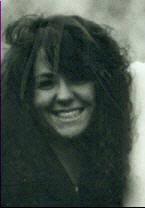Four Solid Rocket Booster Segments in Train Accident
 Four of the Solid Rocket Booster segments were assessed by NASA and ATK after being involved in a train accident.
Four of the Solid Rocket Booster segments were assessed by NASA and ATK after being involved in a train accident. More details about the accident have emerged, following an initial assessment of the what occurred during the incident and the recovery plan, along with a batch of photos from personnel at the scene.
The booster segments involved were en-route to join flight sets for STS-120 and STS-122. Given the availability of booster segments at the time, the long-term concern was mainly related to the time it would take to reopen the route used by the ATK train, and production at the Utah facility.
‘At about 8:00 a.m. Wednesday morning, just entering Alabama heading east, just after the train passed the Tom Bigby Waterway east of Pennington, the train went onto a 650 foot long raised roadbed over a depression in a swampy area,’ noted the Standup report. ‘The lead locomotive was about 550 feet onto the roadbed when it collapsed.
‘The train has two locomotives with a Pullman business car directly behind it containing our escort personnel and a couple of business car representatives, buffer cars, four segments, another buffer car, aft exit cone car, and four more segments.
 ‘Four of the segments between the buffer car and aft exit cone car were actually over the bridge and involved in the collapse. The aft exit cone car and the four other segments at the end of the train were up on the solid roadbed directly before the approach. The front end of the aft exit cone was at the bridge approach where the raised roadbed started. The two locomotives rolled over onto their side, carrying the business car with them.’
‘Four of the segments between the buffer car and aft exit cone car were actually over the bridge and involved in the collapse. The aft exit cone car and the four other segments at the end of the train were up on the solid roadbed directly before the approach. The front end of the aft exit cone was at the bridge approach where the raised roadbed started. The two locomotives rolled over onto their side, carrying the business car with them.’Fortunately, all the workers involved in the accident are on the road to a full recovery, with the most seriously injured worker – who suffered broken bones – also reported to be recovering well. Mr Hale broke away from speaking about the hardware on several occasions, asking the workforce to ‘keep the injured people and their families in their thoughts and prayers.’
‘We had three persons in the business car, business car representatives and the engineer. These individuals were injured but are okay at this point as we understand,’ added the Standup report. ‘One individual was released from the hospital and one was kept overnight and should be released this morning. Believe the engineer was also kept overnight and may be released today.
‘The remainder of the individuals had more serious injuries with some broken bones, but they are in fair or better condition based on the reports received.’
Mr Hale also went on to note that four of the cars with SRB segments inside have now been rolled back away from the accident, and are now housed at a nearby rail yard.
‘The wheels of the remainder of the cars are still on the tracks, even in the collapsed area. The only wheel in the remaining part of the train (including eight segments, aft exit cone and four buffer cars) that is off the track is on the aft exit cone car. The four segments that were on firm ground were decoupled and rolled back three miles into the rail yard.
‘Rail personnel are working this morning on unpinning the aft exit cone car; will do a simple re-wheel of the front wheel set and roll the car back. Worked on clearing debris at front of train last night and will start to build new track this morning parallel to the locomotives and escort car. Plan to have equipment there today righting the locomotives, putting them on the new track and getting them out of there.
‘Have not come up with firm plans yet on getting the four segments out of the crushed track area, including the one deck that rolled off. NASA has teams in place in the area of the accident and chartered a jet to bring family members to be with those involved in the accident.’
The Federal Railroad Administration is leading the investigation, which will include reports of engineering work being conducted on the stretch of rail track prior to the accident. NASA and ATK will continue to assess the status of the segments, which will return to ATK before – hopefully – being cleared to head to Florida.
‘Flight hardware may have been damaged; this must be assessed,’ added Friday’s Launch Operations report. ‘The Program does have plenty of Solid Rocket Motors, so this should not affect the flights in the near term, but there may be long-range consequences.
‘MSFC’s RSRM Chief Engineer, the MSFC RSRM S&MA representative, and several other folks are all currently at the railroad accident site to understand the motor segments better and assess the risk of moving them.’

No comments:
Post a Comment